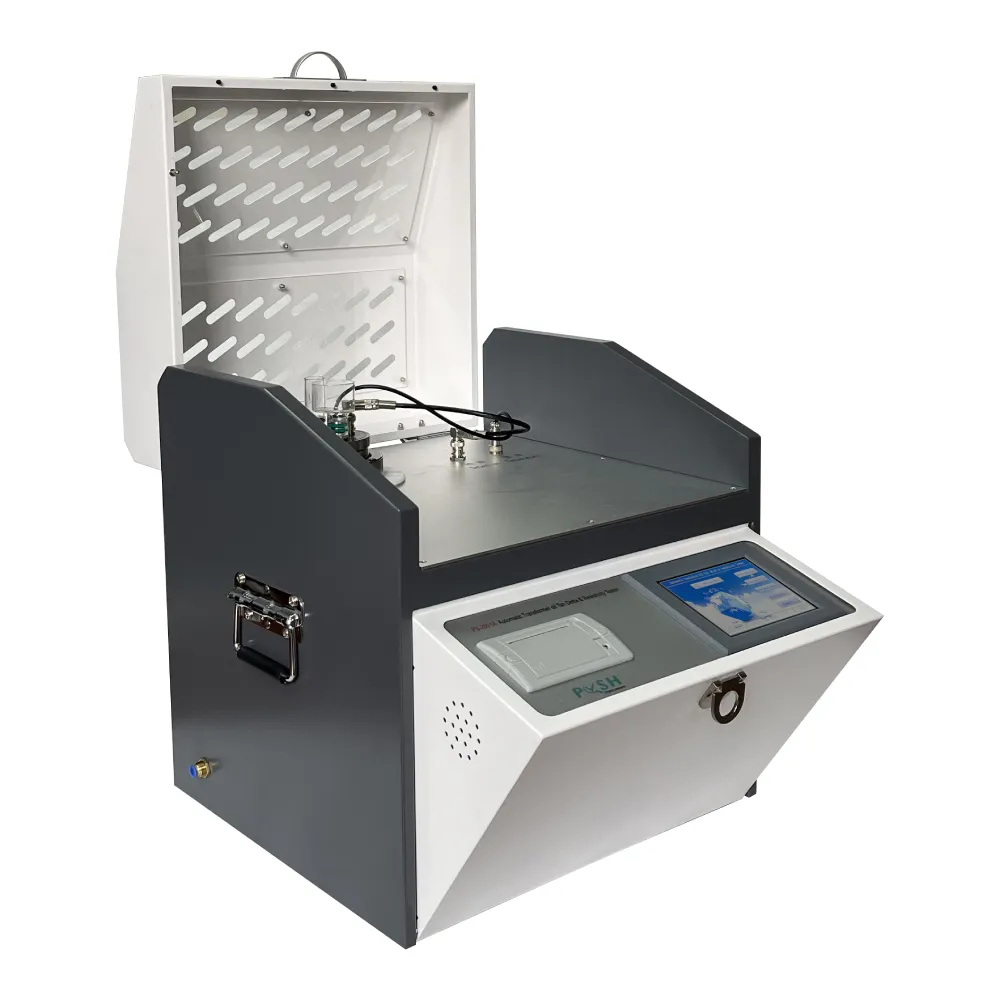 English
English


oil dielectric breakdown voltage test
Understanding Oil Dielectric Breakdown Voltage Testing
Dielectric breakdown voltage testing is a crucial aspect of evaluating the insulating properties of transformer oil and similar dielectric fluids used in electrical equipment. This process plays an essential role in ensuring the reliability and safety of high-voltage electrical systems, which are fundamental to energy distribution and various industrial applications.
What is Dielectric Breakdown Voltage?
Dielectric breakdown voltage refers to the maximum voltage that a dielectric material can withstand without breaking down and allowing current to pass through. For transformer oils, which serve as both an insulator and coolant, a high dielectric breakdown voltage is essential to prevent electrical failures, which could lead to equipment damage, operational interruptions, and safety hazards.
This testing method examines the ability of the oil to withstand electrical stress without failing, ensuring that it can perform effectively under high voltage applications. The breakdown occurs when the electric field strength exceeds the dielectric strength of the material, resulting in ionization and, ultimately, an electrical short circuit.
Importance of Testing Transformer Oil
Transformer oils are subject to various environmental and operational stresses that can degrade their insulating properties over time. Factors such as temperature, moisture, and contamination can significantly impact the dielectric strength of the oil. Regular testing helps to
1. Prevent Equipment Failure A transformer with compromised oil insulation can fail catastrophically, leading to unintended outages and costly repairs. Monitoring the dielectric breakdown voltage allows for preventative maintenance before failures occur. 2. Assess Oil Quality Over time, transformer oil can become contaminated with water, particulates, or other substances, which lowers its dielectric strength. Routine testing helps to assess oil quality and decide if it requires treatment or replacement. 3. Extend Equipment Lifespan Timely detection of issues in transformer oil helps extend the lifespan of transformers, resulting in long-term cost savings and efficiency improvements in electrical systems.
The Testing Process
oil dielectric breakdown voltage test

The typical procedure for dielectric breakdown voltage testing involves several crucial steps
1. Sample Preparation A representative sample of the transformer oil is collected under controlled conditions to avoid contamination. The sample is usually taken from the operating transformer or other equipment.
2. Test Equipment Setup The test is conducted using a dielectric breakdown tester that applies a controlled voltage to the oil sample. The equipment ensures uniform field distribution and isolates the sample to minimize environmental influences.
3. Voltage Application The device increments the voltage until breakdown occurs. During this phase, the testing apparatus monitors the voltage level at which the oil begins to conduct electricity. This value is recorded in kilovolts (kV).
4. Result Evaluation The recorded breakdown voltage is then analyzed against industry standards and the specific requirements for the application. Common standards include ASTM D877 and IEC 60156, which establish benchmarks for dielectric testing.
Conclusion
The importance of oil dielectric breakdown voltage testing cannot be overstated in the realm of electrical engineering. Regular testing and monitoring of transformer oils not only ensure operational safety but also enhance the reliability and efficiency of power systems. As technology advances, improvements in testing methodologies and equipment promise to refine our understanding and further increase the standards of dielectric materials, paving the way for safer and more resilient electrical infrastructure.
In summary, dielectric breakdown voltage testing of oil is a vital practice that contributes to the sustainability of electrical systems, ensuring their proper functioning amidst the growing demands of energy consumption. By prioritizing these assessments, businesses and operators can safeguard their investments and uphold safety standards that protect both machinery and personnel in the electrical sector.
-
Differences between open cup flash point tester and closed cup flash point testerNewsOct.31,2024
-
The Reliable Load Tap ChangerNewsOct.23,2024
-
The Essential Guide to Hipot TestersNewsOct.23,2024
-
The Digital Insulation TesterNewsOct.23,2024
-
The Best Earth Loop Impedance Tester for SaleNewsOct.23,2024
-
Tan Delta Tester--The Essential Tool for Electrical Insulation TestingNewsOct.23,2024





